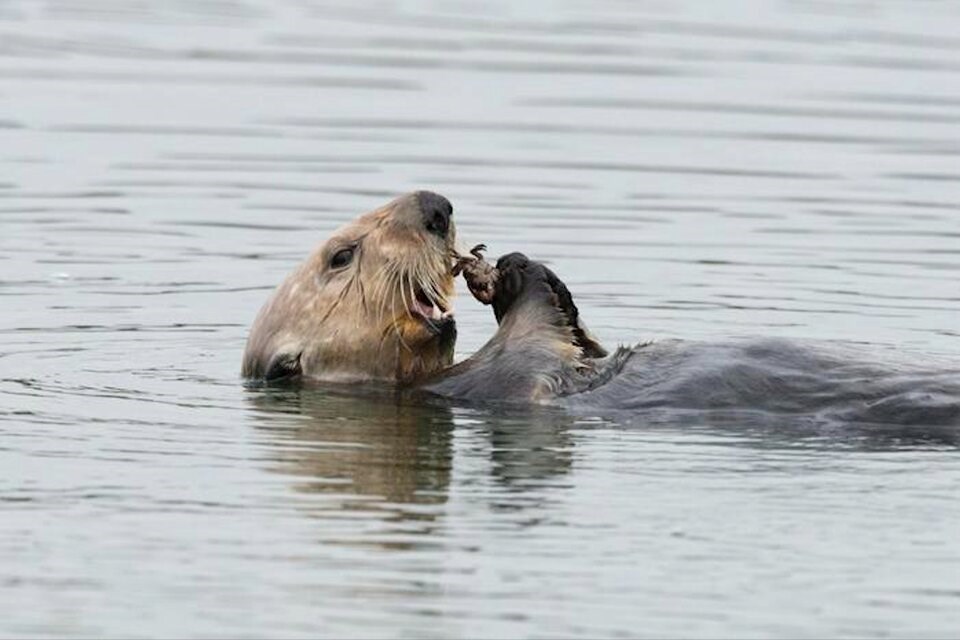The return of sea otters to a California salt marsh helped curb ravenous crabs and prevent its drowning — a lesson scientists say British Columbia could learn from.
By the early 1800s, fur traders from Russia, Britain and the United States hunted sea otters across the to the point of decimation. The population dropped from an estimated 300,000 to 1,000. When in 1929, a fur hunter shot ÎÚÑ»´«Ã½’s last verified sea otter near Vancouver Island’s Kyuquot Sound, it sealed a run of sea otter extirpation that stretched uninterrupted through Washington, Oregon and large swaths of California.
Since then, conservation and reintroduction programs have allowed some sea otter populations to rebuild, including one in the central Californian estuary of Elkhorn Slough just south of Santa Cruz.
There scientists spent decades carefully documenting the predator's return, eventually gathering more than 35,000 otter “foraging bouts” that showed how and what they ate.
Ravenous eaters, an adult sea otter consumes about a quarter of its body weight (roughly 10 kilograms) every day in order to keep up its body temperature in cool waters.
For the Elkhorn Slough sea otters, one of their favourite meals is burrowing crab, a native species whose marsh-eating tendencies have grown out of control in the absence of predators.
A drowning buffer against climate change
A healthy salt marsh grows like a coral reef, the dead plants acting as scaffolding for the next generation.
When salt marsh plants die, their carbon is locked up in muddy layers of dead roots and stems — a process that forms one of the world’s great natural carbon sinks and acts a buffer protecting communities from storms and sea level rise.
Salt marshes up and down the west coast of North America face a number of pressures — from city building and industrial development to invasive species and sea level rise.
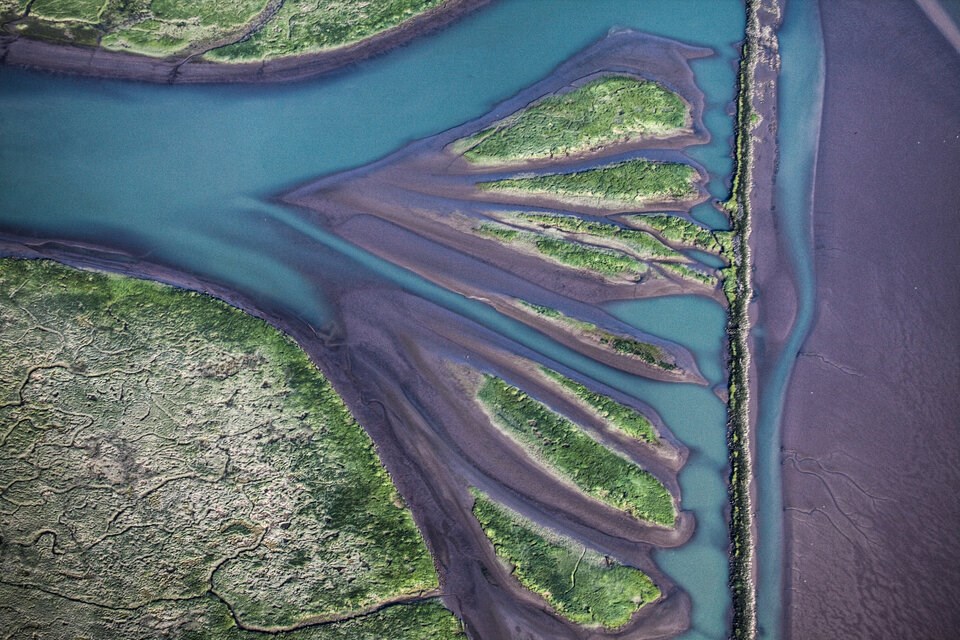
The salt marsh at California’s Elkhorn Slough was no different, said Brent Hughes, a marine ecologist at Sonoma State University who has spent years tracking their growth and demise.
As the burrowing crabs munched away at the salt marsh unchecked for well over 100 years, the coastal wetlands began to erode and slip under the sea.
“If the salt marsh is not healthy, then it's going to drown. This is what all sea marshes are experiencing,” said Hughes.
A ‘wild’ positive effect
In a published in the journal Nature this week, Hughes and his U.S. and Canadian colleagues used aerial photography and ground measurements over decades to track the top predator’s impact on five tidal creeks.
They then compared parts of the marsh where sea otters had returned to those where they were absent. Where otter populations had bounced back, erosion along creek beds and the edges of marshes slowed by 90 per cent, found the study.
“It’s so wild,” said Hughes. “No matter where they go, they have these large effects… and for plants, they often have a positive effect.”
“We were fortunate because we caught them in their state of recovery.”
Today, Hughes says the sea otter population has fully recovered in the marsh. As he put it, “the hotel is full and the no vacancy light is on.”
ÎÚÑ»´«Ã½ sea otters landed in a grocery store 'packed with food'
After ÎÚÑ»´«Ã½’s last sea otter was shot, the species would remain a memory for 40 years. In 1969, that changed, when the first translocations occurred in Checleset Bay on the northwest coast of Vancouver Island.
Over the coming years, 89 individuals originally from Alaska’s Amchitka Island and Prince William Sound were released in the bay. The Vancouver Island population grew at a rate of nearly 19 per cent a year until 1995, although that growth rate has been cut in half in recent years.
Today, ÎÚÑ»´«Ã½’s sea otter population sits at about 8,000 individuals — not quite a third of what it used to be, according to Jane Watson, a professor emeritus of marine ecology Vancouver Island University.
“They had an inordinate food supply,” said Watson. “Urchins, sea cucumbers and geoducks — all of those prey became very big and hyper-abundant.”
“They nabbed a grocery store that was packed with food.”
Watson says that has changed. Otters born in the Checleset Bay area are now prey limited and there are about as many sea otters as the ecosystem can support. Elsewhere along the ÎÚÑ»´«Ã½ coast, she said sea otters are expanding their range in several directions, including a relatively large translocated population on the central coast and 19 counted in Haida Gwaii in 2019.
Some view the return of sea otters as bringing a balance to ecosystems out of balance. Some have argued for their sometimes disturbing territorial behaviour and . For some communities, including First Nations that rely on seafood, their presence has made harvesting shellfish more difficult.
“It depends on who you talk to,” Watson said. “We’ve spent 150 years without sea otters. Throughout that time we’ve come to expect an ecosystems that doesn’t have a predator.”
“Sea otters will out compete a commercial fishery every time.”
Could a California slough’s success be replicated in ÎÚÑ»´«Ã½?
Watson said nobody in ÎÚÑ»´«Ã½ has documented sea otters benefiting salt marshes like in California.
are the largest urban equivalent in ÎÚÑ»´«Ã½, but only a handful of sea otters have been seen in the in recent years.
Watson says the animal likely existed in the Salish Sea at some point in the past but has remained largely absent amid sustained human presence.
Other pressures still facing sea otters in ÎÚÑ»´«Ã½ include oil contamination, entanglement in fishing gear, climate change and strikes from vessels — all heightened risks in the Strait of Georgia — says the Committee on the Status of Endangered Wildlife in ÎÚÑ»´«Ã½ (COSEWIC).
“A major oil spill could affect very large portions of the current range, making the species especially vulnerable,” notes COSEWIC in its risk assessment.
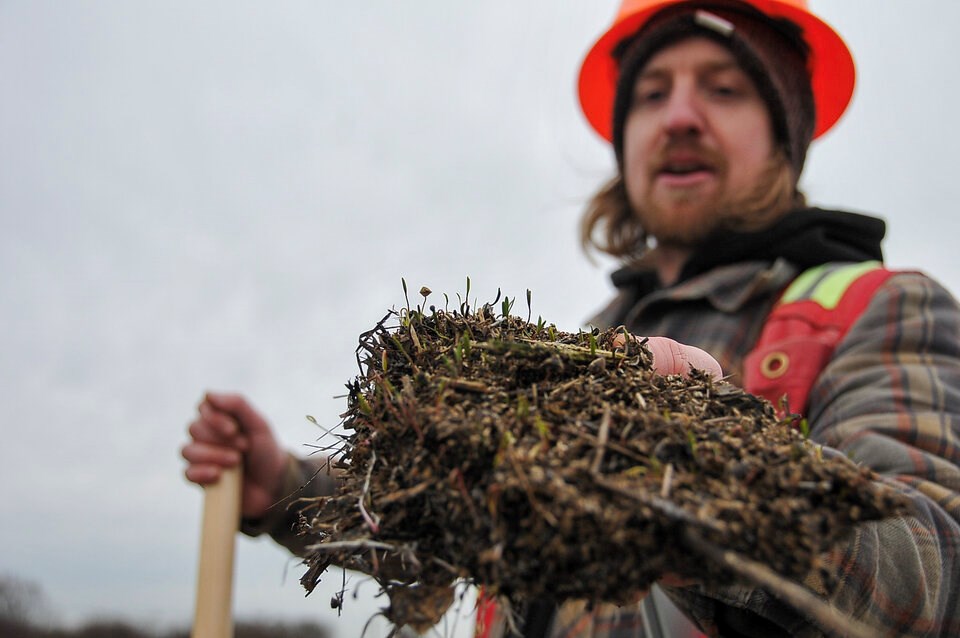
While Watson says she doesn’t expect to see sea otters helping ÎÚÑ»´«Ã½’s salt marshes rebound in her lifetime, that doesn’t mean the province can’t learn lessons from central California.
ÎÚÑ»´«Ã½'s kelp forests, for one, have evolved alongside sea otters over the last 30 million years. Floating offshore, they help trap offshore sediments and prevent coastal erosion, especially when storm-driven waves appear.
But the predator’s absence meant kelp-eating sea urchins had no check, and areas once rich in biodiverse kelp forests disappeared, turning into dormant “.”
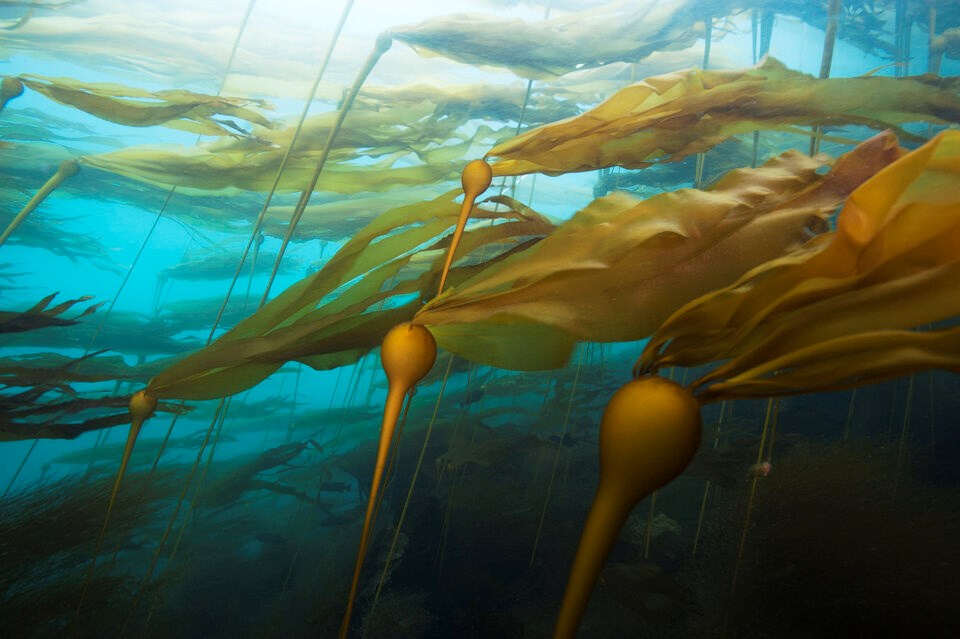
Another long-term published last month showed the same central Californian sea otter population supported a 56 per cent increase in kelp beds between 1910 and 2016. That at a time when other parts of the state’s coast lost between 50 and 60 per cent of their kelp forests.
“The change from no kelp to kelp is a very dramatic change,” said Watson. “It matters.”
Together with kelp, seagrass helps prevent coastal erosion, supports a wide variety of juvenile fish — including salmon and herring — and is an important carbon sink either washed deep into the ocean or buried in muddy layers.
Sea otters tend to root around in those muddy layers of seagrass in search of clams. That mixes up the seaweed's pollen, promoting genetic diversity in the face of an uncertain future.
“It offers a whole set of genetic chances to adapt to climate change,” Watson said. ​
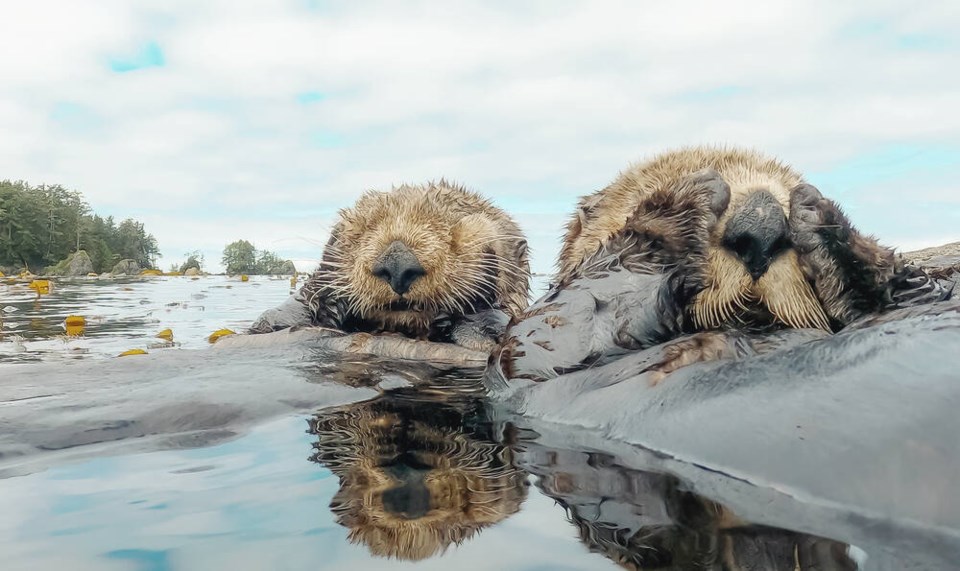
​Watson said the California salt marsh experience is an important reminder that sea otters are among a constellation of predators and other big animals. From buffalo that fertilize prairie grasses to wolves pulling salmon into the forest, the return of a keystone species restores lost relationships created over evolutionary time, Watson said.
The evidence sea otters matter for kelp, seagrass and now salt marshes goes to show just how widespread and important their presence used to be, and could be once again.
“It might just be a matter of time,” Hughes said.
